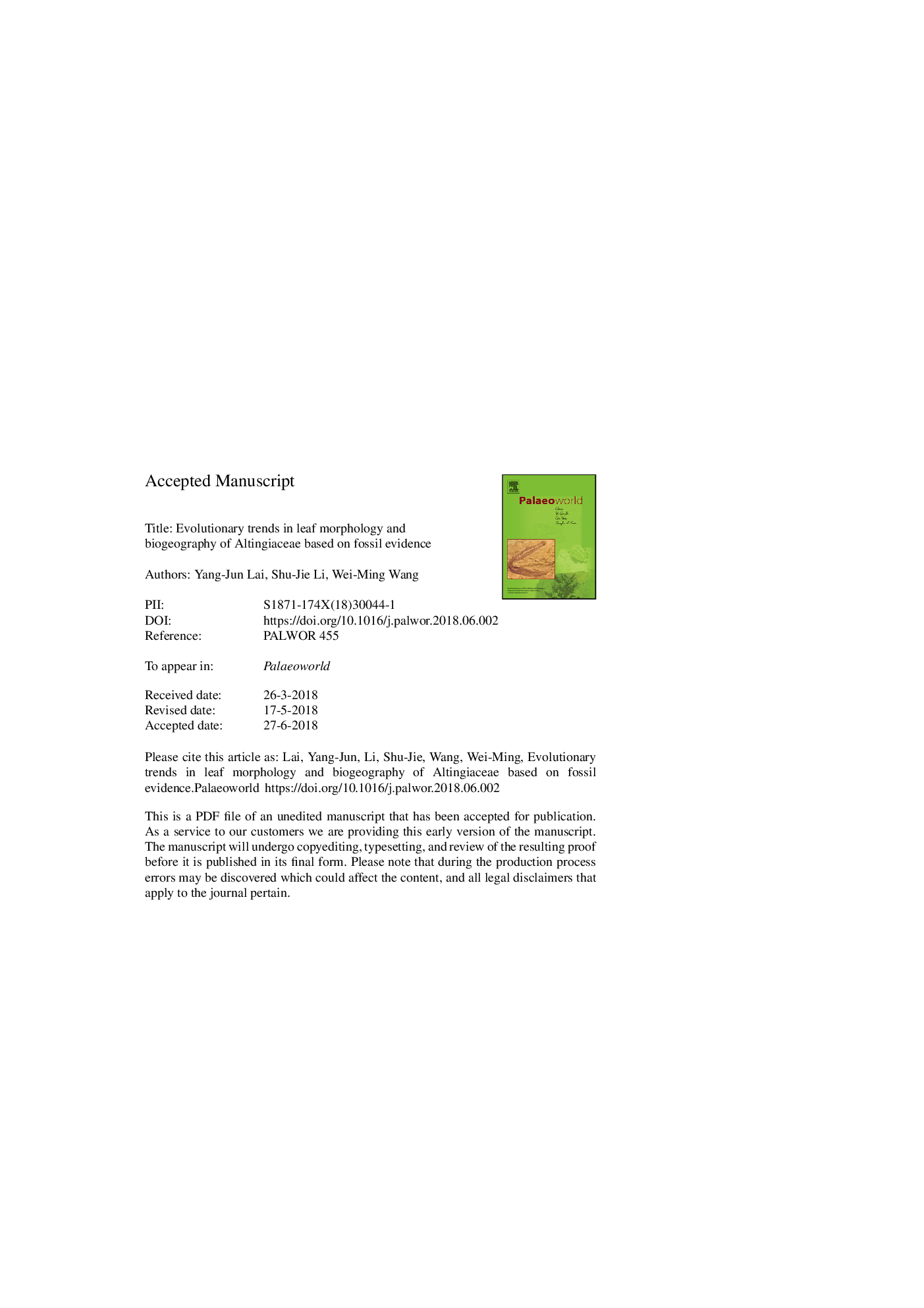| Article ID | Journal | Published Year | Pages | File Type |
|---|---|---|---|---|
| 8953177 | Palaeoworld | 2018 | 20 Pages |
Abstract
The extant woody family Altingiaceae, consisting of only one genus Liquidambar L. with ca. 15 species, demonstrates a typical disjunctive distribution among East Asia, North America, and the Mediterranean. However, the fossil record throughout the Cenozoic indicates that Altingiaceae was once widespread in the Northern Hemisphere. After studying the abundant Altingiaceae fossil leaf collections, we revised the easily-confused fossil leaves and corrected the misidentifications. Consequently, we proposed an evolutionary history of Altingiaceae leaf morphology in consulting the modern leaf characteristics. It is revealed that the trilobated leaf morphology is the ancestral character state, whereas both the pentalobated and the undivided, pinnate-veined lineages evolved separately. The latter diverged from the trilobated ancestor in South China in Eocene. The lobed and undivided lineages represent the deciduous and evergreen, respectively. An extensive fossil database of Altingiaceae was built to reconstruct its biogeographical history. We reconfirmed that Altingiaceae developed into a temperate and a subtropical-tropical patterns and migrated across both the Bering and North Atlantic land bridges since Cretaceous, independently. It was widespread in the early Neogene of North America and Eurasia, and became extinct in the high latitude triggered by the global cooling and aridification. The modern disjunctive distribution was finally formed, with southeast Asia as its modern diversity center. This study provides new fossil evidence for understanding the morphology and biogeography of the family Altingiaceae.
Related Topics
Physical Sciences and Engineering
Earth and Planetary Sciences
Palaeontology
Authors
Yang-Jun Lai, Shu-Jie Li, Wei-Ming Wang,
